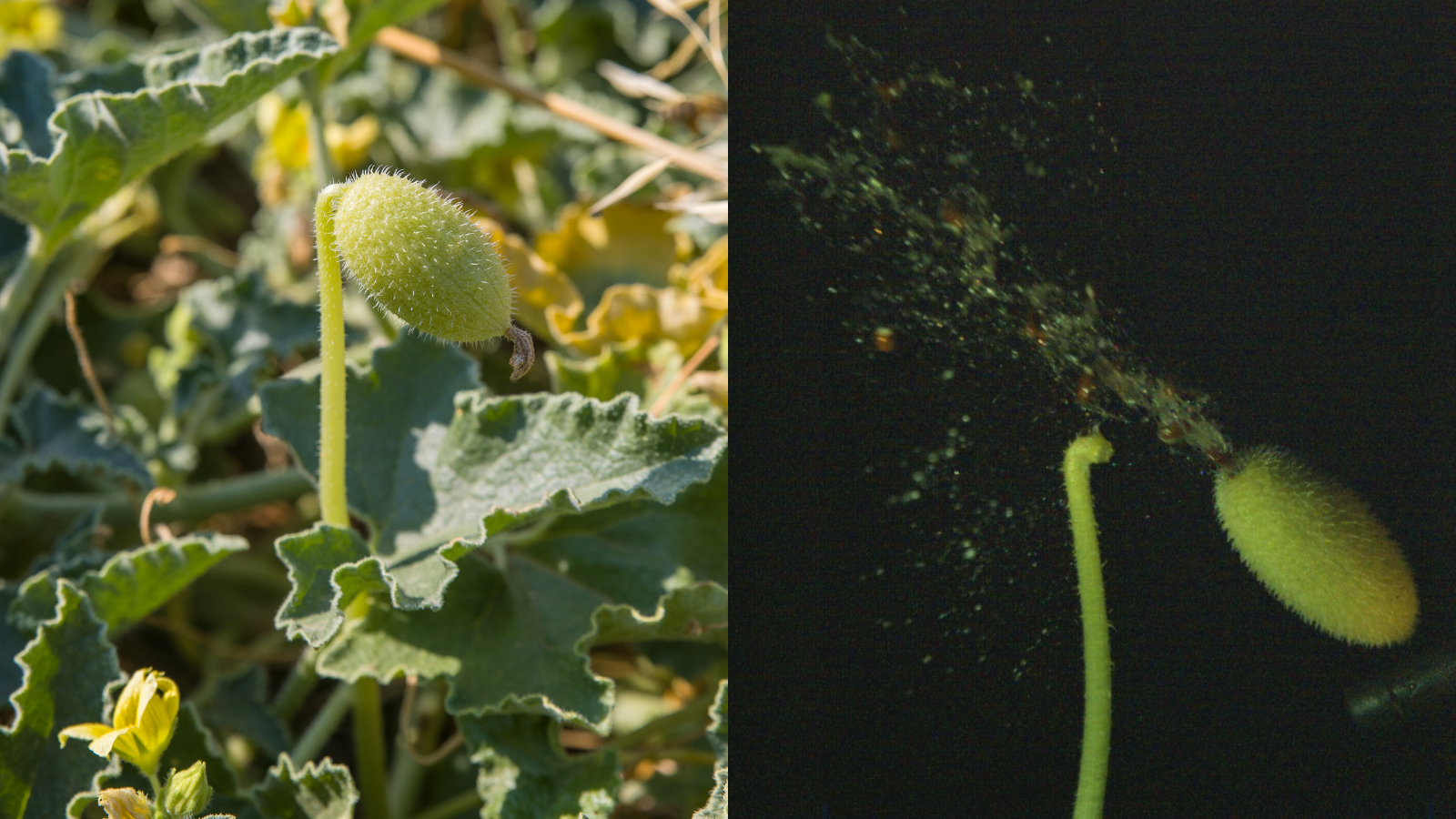
Squirting cucumbers are named after the way they expel their seeds in a violent jet of liquid — and now, scientists have finally unlocked the mysterious mechanics of these explosive launches.
New research suggests these inedible cucumbers (Ecballium elaterium), whose name means "throw out" in Greek, accumulate fluid in their fruit, building so much pressure inside the cucumbers that they eventually burst. Remarkably, scientists discovered that this pressure drops just before the seeds are released, because the fluid drains from the fruits into the stem, changing its shape and catapulting the cucumbers away so they spew their contents.
The findings provide answers to questions that have long intrigued researchers.
"For centuries people have asked how and why this extraordinary plant sends its seeds into the world in such a violent way," study co-author Chris Thorogood, deputy director and head of science at Oxford Botanic Garden and Arboretum in the U.K., said in a statement. "Now, as a team of biologists and mathematicians, we've finally begun to unravel this great botanical enigma."
Related: Why do strawberries have seeds on the outside?
Squirting cucumbers are members of the gourd family (Cucurbitaceae), which also includes melons, pumpkins and zucchini. To get to the bottom of how these small, furry cucumbers release their seeds, Thorogood and his colleagues used time-lapse photography, CT scans and a high-speed camera capable of capturing 8,600 frames per second. The seed ejection lasts only 30 milliseconds — too short to be seen with the naked eye, according to the statement.
The team also measured the volume of the cucumbers and stems before and after the plants released their seeds. The researchers then fed these data into mathematical models to map the mechanics and trajectories of the seed ejections.
The results, published Monday (Nov. 25) in the journal PNAS, reveal for the first time how squirting cucumbers expel their seeds "with remarkable speed and precision," study co-author Finn Box, a research fellow in the Physics of Fluid & Soft Matter group at the University of Manchester in the U.K., said in a separate statement.
Fluid accumulates inside the cucumbers for several weeks, thereby building the pressure required to eject the seeds. But in the days preceding the launch, some of the fluid moves into the stem, causing it to grow longer, thicker and stiffer. This process is "almost unheard of in the plant world" and shifts the angle of the cucumbers in a way that maximizes the spread of seeds once the fruits burst, Box said.
Microseconds before the seed launch, the tip of the stem recoils away from the cucumbers, causing them to rotate as they catapult off. As a result of this twisting motion, squirting cucumbers can throw seeds up to 33 feet (10 meters) away from the mother plant at speeds of 66 feet per second (20 meters per second).
"The explosive launch of the cucumber plant has evolved over generations to help it survive," Box said. "These mechanisms allow the plant to disperse seeds over a wide area and reduce overcrowding and competition among offspring and other neighboring plants, ensuring a better chance of survival for the next generation."
According to the study, slight changes to these mechanisms can lower the seeds' chances of survival. In their models, the researchers explored the consequences of building pressure in the fruits without redistributing fluid to the stem, for example, which led to a closer spread of seeds around the mother plant and reduced seedling survival.
The results solve a long-standing mystery, but they could also inspire new technologies, such as medical devices that can eject medication on demand at specific sites in the body, Box said in the first statement. "This research offers potential applications in bio-inspired engineering and material science, particularly on-demand drug delivery systems," he said.







